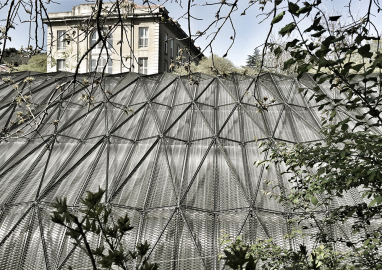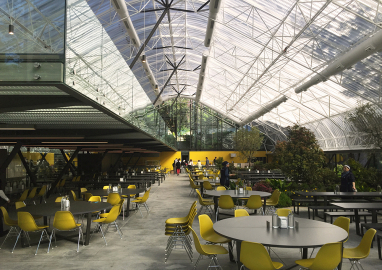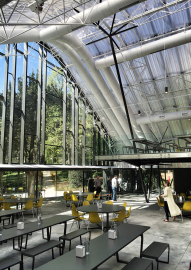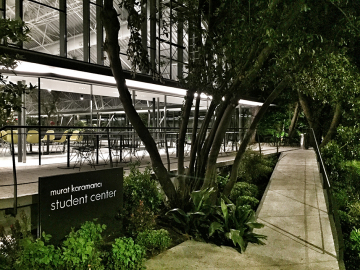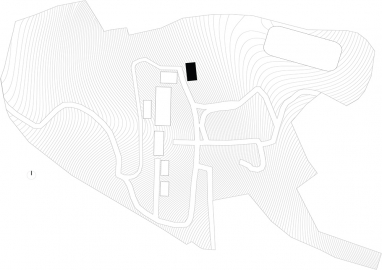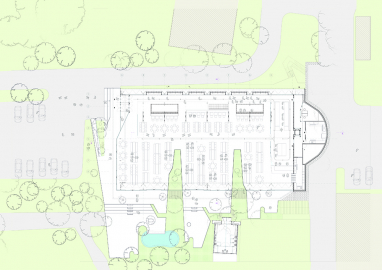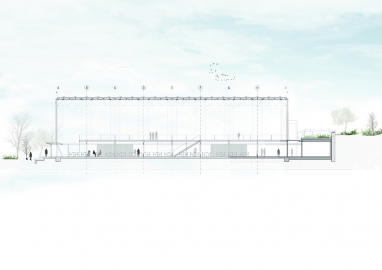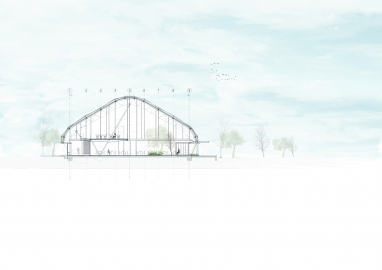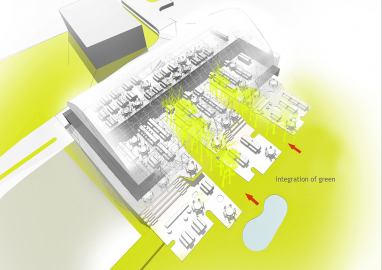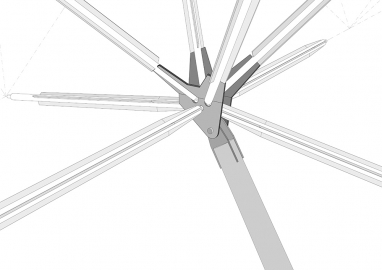Robert College Murat Karamancı Student Center
Murat Karamanci Student Center located at Robert College, Istanbul is an educational building that holds up as a good example of "sustainability", "recyclability" and "re-usage" is aimed to create an multifunctional environment where the younger generation can picture a freer and a brighter future.
Because the current dining hall wasn't sufficient for the needs, the administrative council of the school decided to build a new building to serve as the dining hall. However, since the site was not convenient for a new construction, the council decided to transform the gym space, which was a membrane-covered enclosed space named "Bubble" by the school employees, into a dining area. The administrative council, then began to invite architecture firms to visit the space and make proposals in 2005. Later, the council approved to construct a multifunctional dining building that can reshape the life inside the campus and will function as a gathering point for students and instructors.
Robert College, where the site is located, is one of the oldest American academic institutions outside the US. For the past 150 years, since its establishment, the school has maintained its reputation as the best and one of the most rooted schools of Turkey. The school sits on a site on the Bosporus where constructions are prohibited due to a historical preservation law. Other buildings on the school site were built during 1914-1925s and are considered as historical buildings and are being conserved.
Since the site is on a very natural habitat and also has a historical surrounding, merging the building with the qualities of the site was one of the most important design decisions. Therefore, the current location of all the trees on the site were maintained, thus the building was designed to be penetrated by the trees. Also, the transparent materiality of the building makes the building to be perceived as a translucent curtain, and helps nature to blend in with the interior space throughout the building including the kitchen on the basement floor. By this, the structure is both invisible and in great harmony with the existing buildings.
As the result of a very deeply thought investigation and effort, the existing weak membrane construction, which was at first planned to be removed, have been recycled and reinforced to be the main pendentive structure of the 1500m² (1200m² on the first floor and 300m² on the mezzanine floor) new building. This building should not be regarded as a renovation project but as a completely new, re-cycled building and a product of a sensitive approach under the notion of sustainability.
To conclude, the design of the building aims to trigger the creativities of students, improve their productivities while offering much more than just a dining area. Transparency can be observed through the smallest details to the larger scales, giving the user the sense of weightlessness, flexibility, limitlessness and freedom while creating the sense of nature.
Samples from 1830 structural elements had been taken and sent to the laboratory to be analyzed. Per the analysis, the existing space-frame structure was only built to carry the weight of the membrane and was considerably collapsed at some parts. However, after the reinforcement processes, all existing structural elements started to work out in sync and provide support.
Later, as the floor area wasn't adequate, a mezzanine floor had been inserted while preserving the integrity of the 12meter-tall volume. The acoustical quality of the building has been improved by the penetrating trees and the shrub masses on the interior. This design decision was not only helping with the acoustics but also creating a sense of being in nature. Moreover, the position of the shrub masses helped defining smaller areas. Due to the transparent materiality, the natural light can be brought into the whole building homogeneously. Users can experience distinct light qualities at different times of the day and year. To prevent light to become a discomforting factor, a barrel-vault roof cover has been designed as a part of the double wall system.
The main material of the building is steel, which is an advantageous material in terms of sustainability. The mezzanine floor's structure and the eaves were designed as reinforcing elements. The existing space frame is supported from the mezzanine floor which undertook the duty of a spine beam, by steel columns at certain distances. Also, the west facade where the vault structure sits on, has been connected to the mezzanine floor at similar distances to prevent the vault structure from opening out. The legs of the vault’s eastern facade have been pegged to function as horizontal beams with the cross vaults placed into the eaves.
Polycarbonate sheets are assembled as the first layer of roof to protect the building. Whereas the second layer is comprised of strained metal sheets that were triangulated to improve the stabilization. The 50cm gap between this double layer system helps climate control. Also, there are mobile screens to control the sunlight based on usage while saving energy.
All construction details were specifically designed and produced for this project, including the sliding glass façade system with profileless hidden mullion, solely by Ahmet Alataş.

